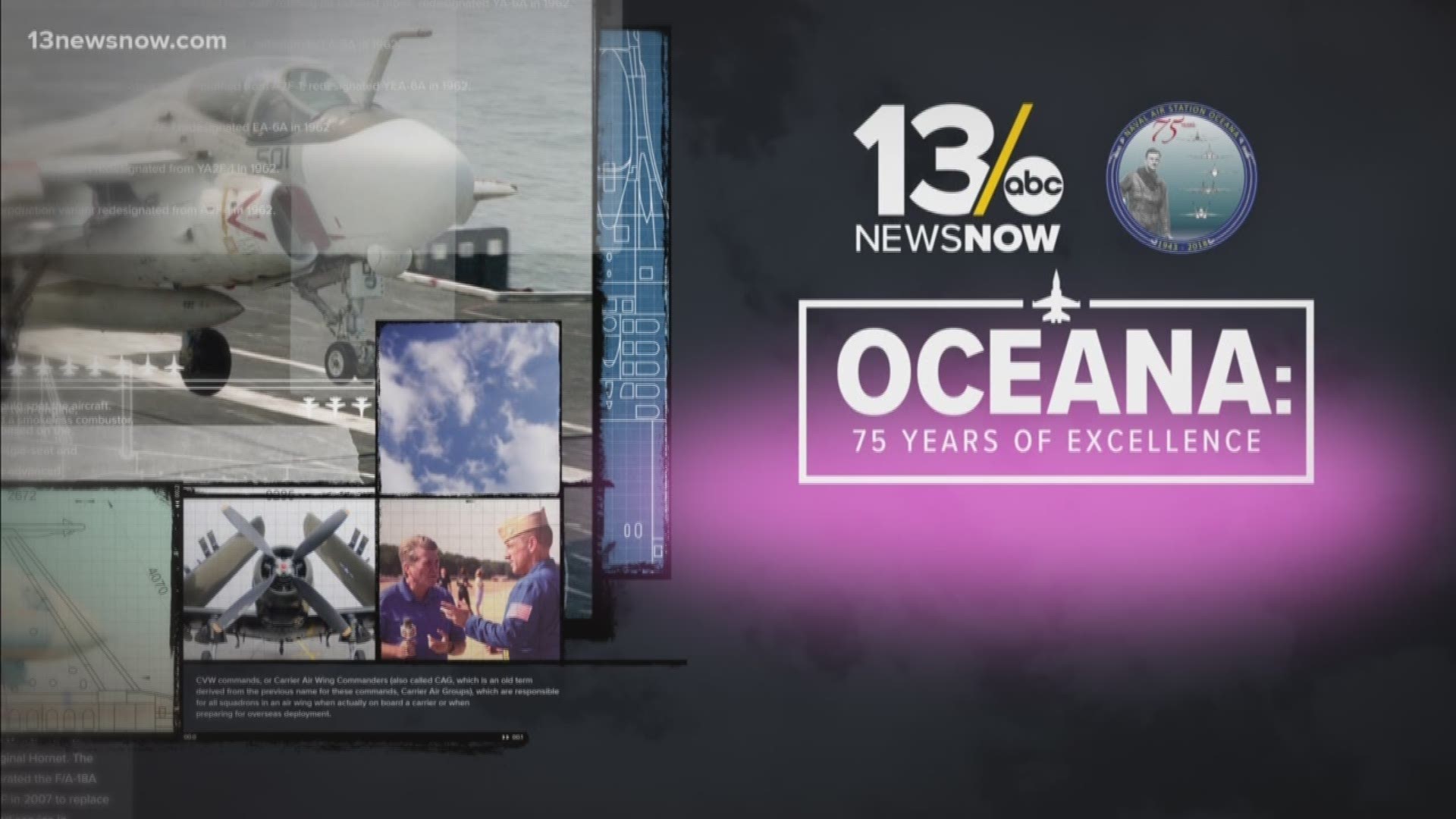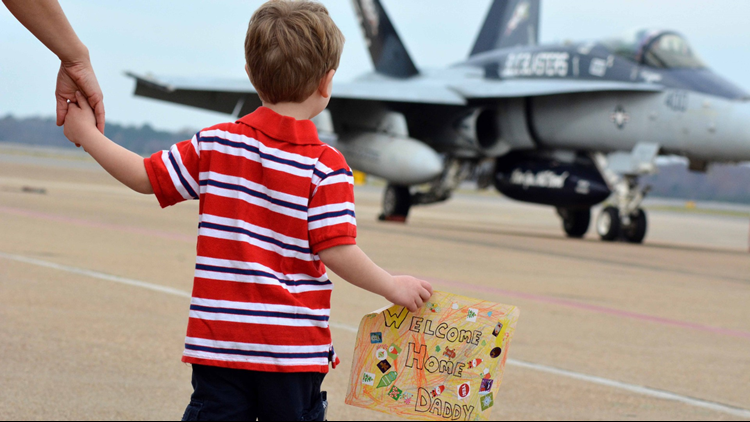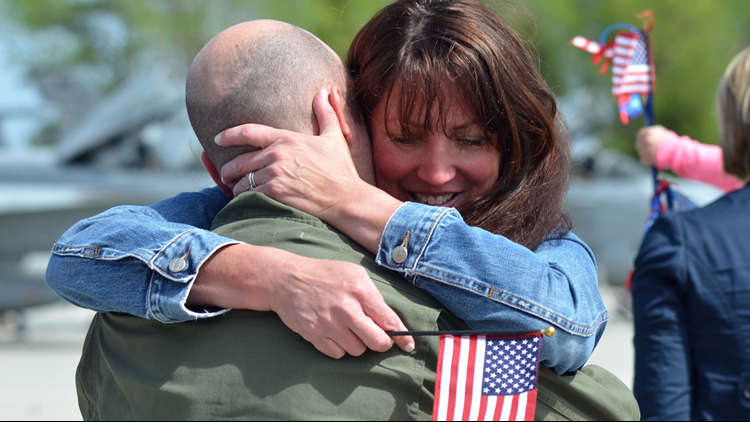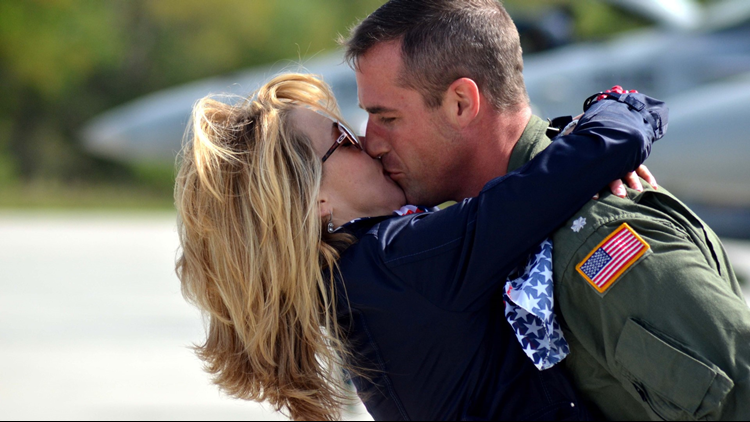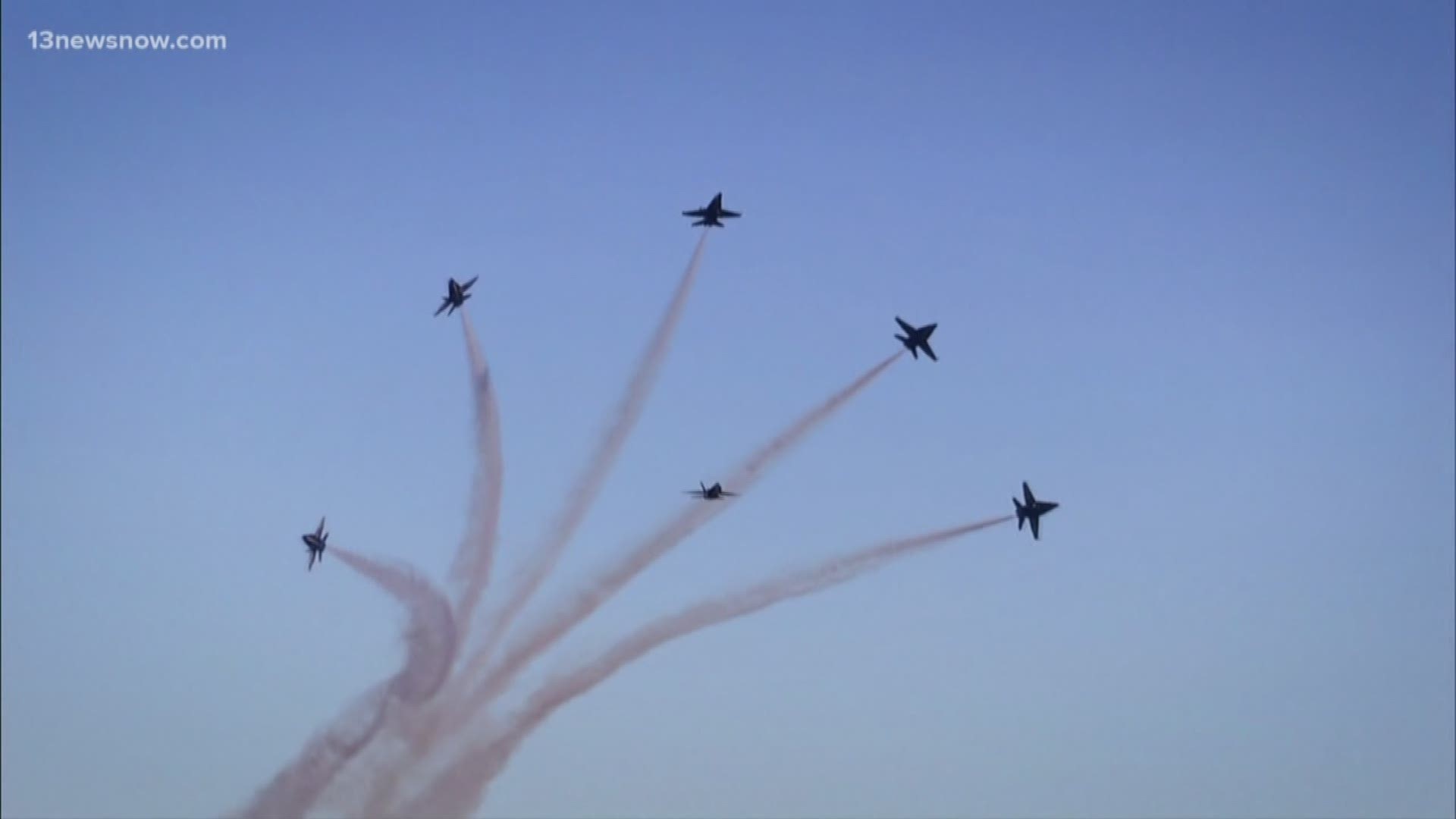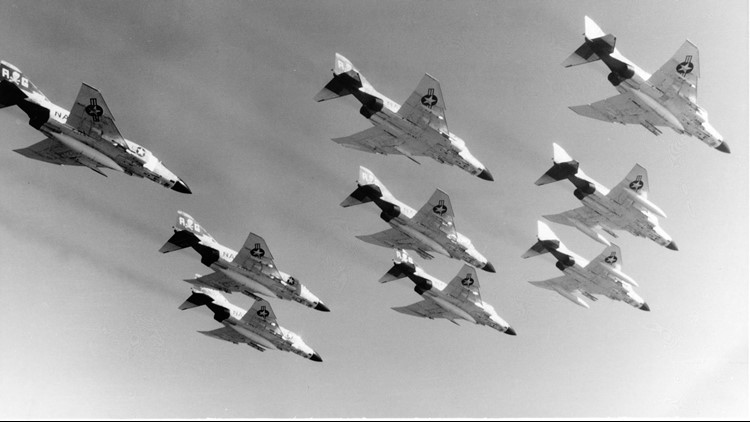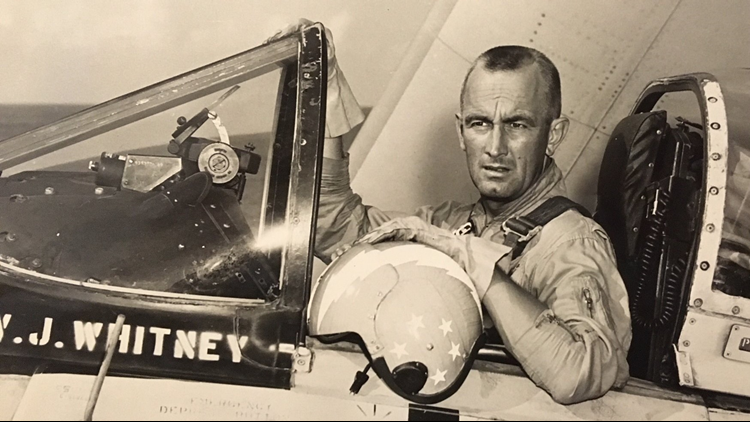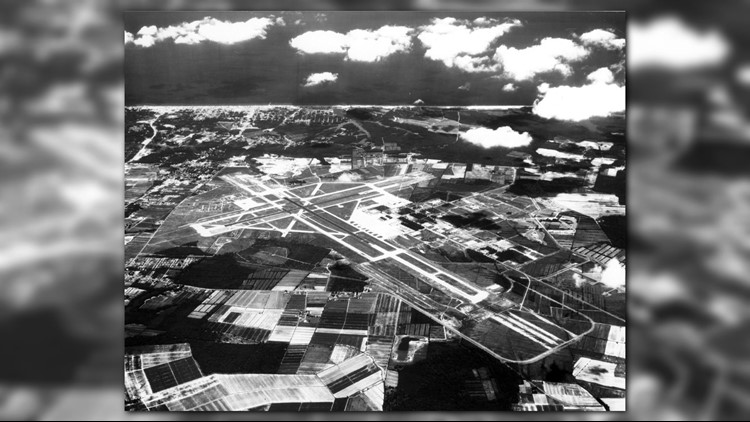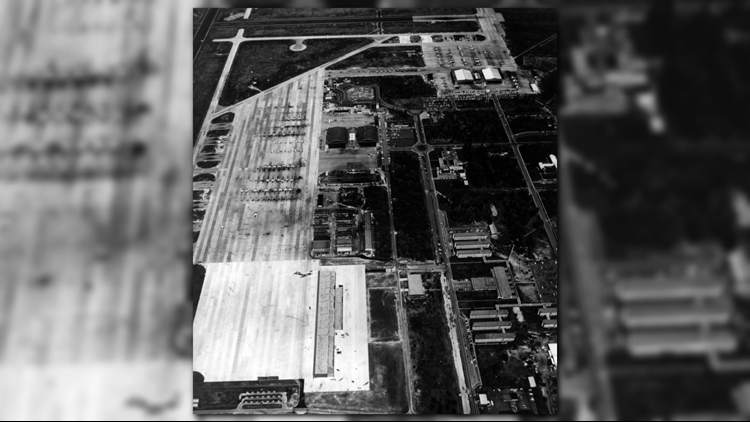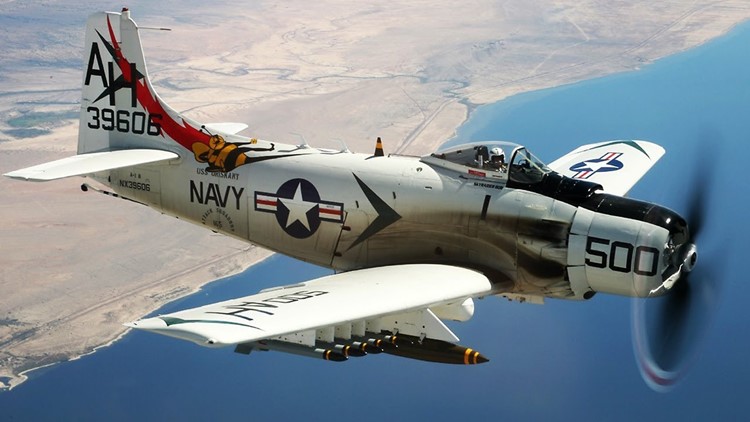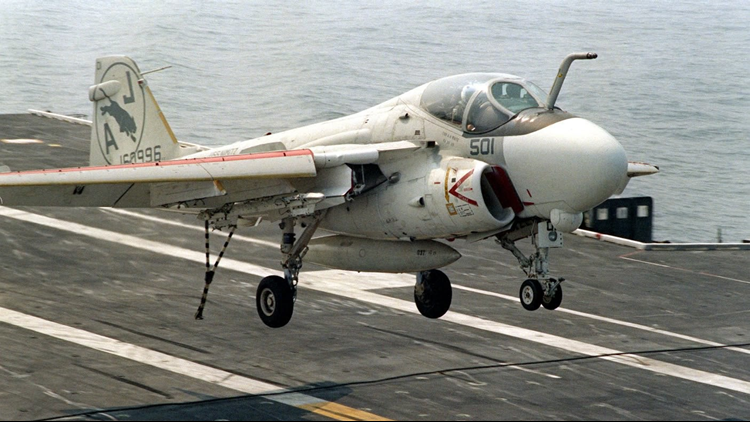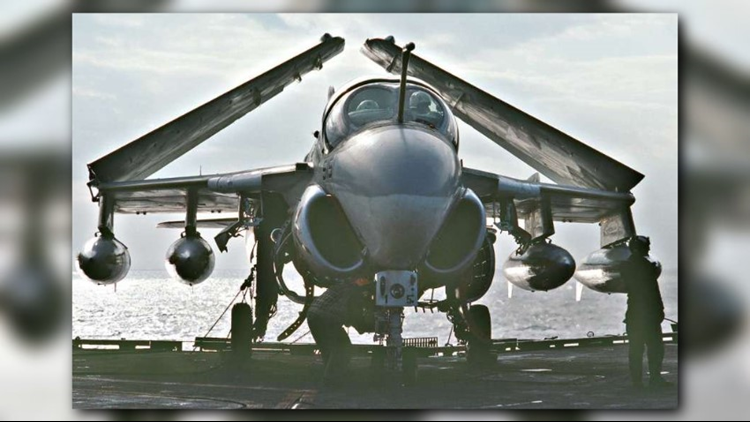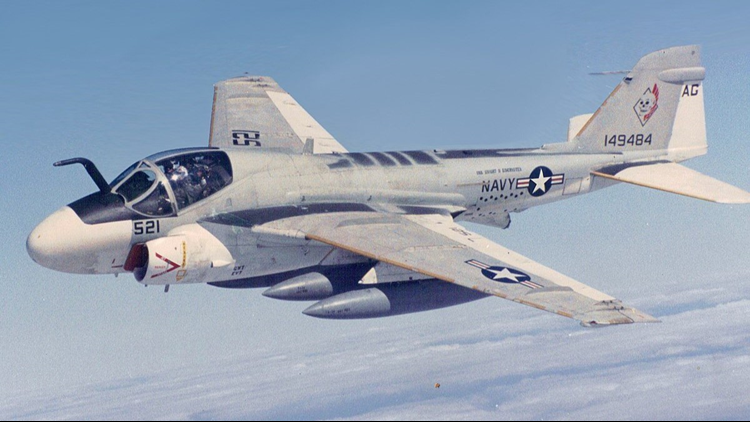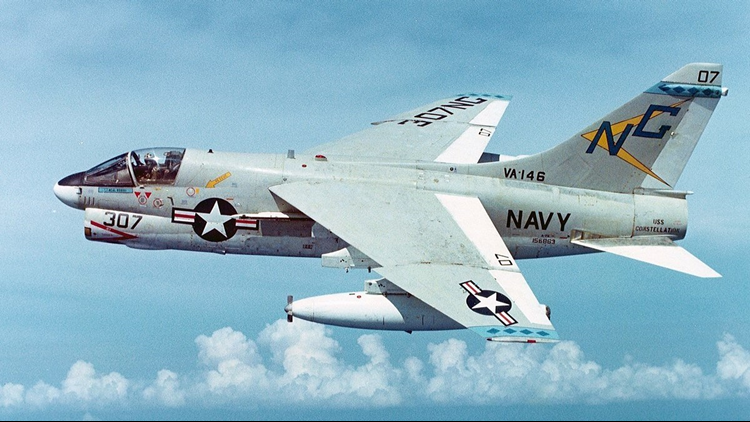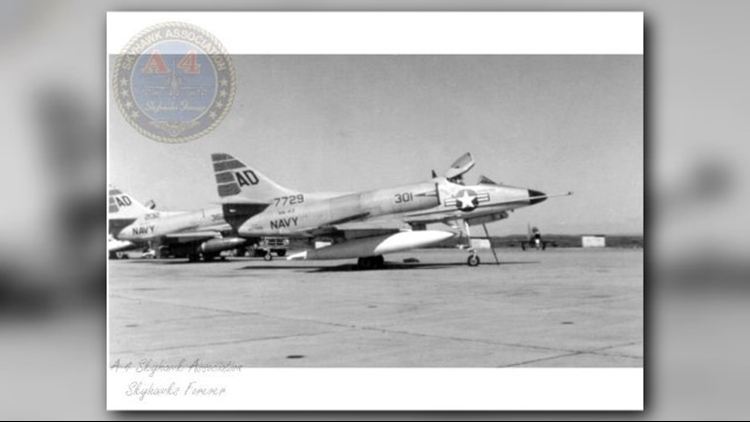Oceana: 75 Years of Excellence
In the 75 years since the military installation began operations, Naval Air Station Oceana has prepared aviators for every battle the U.S. has faced, from World II through the current campaigns in Iraq and Afghanistan.
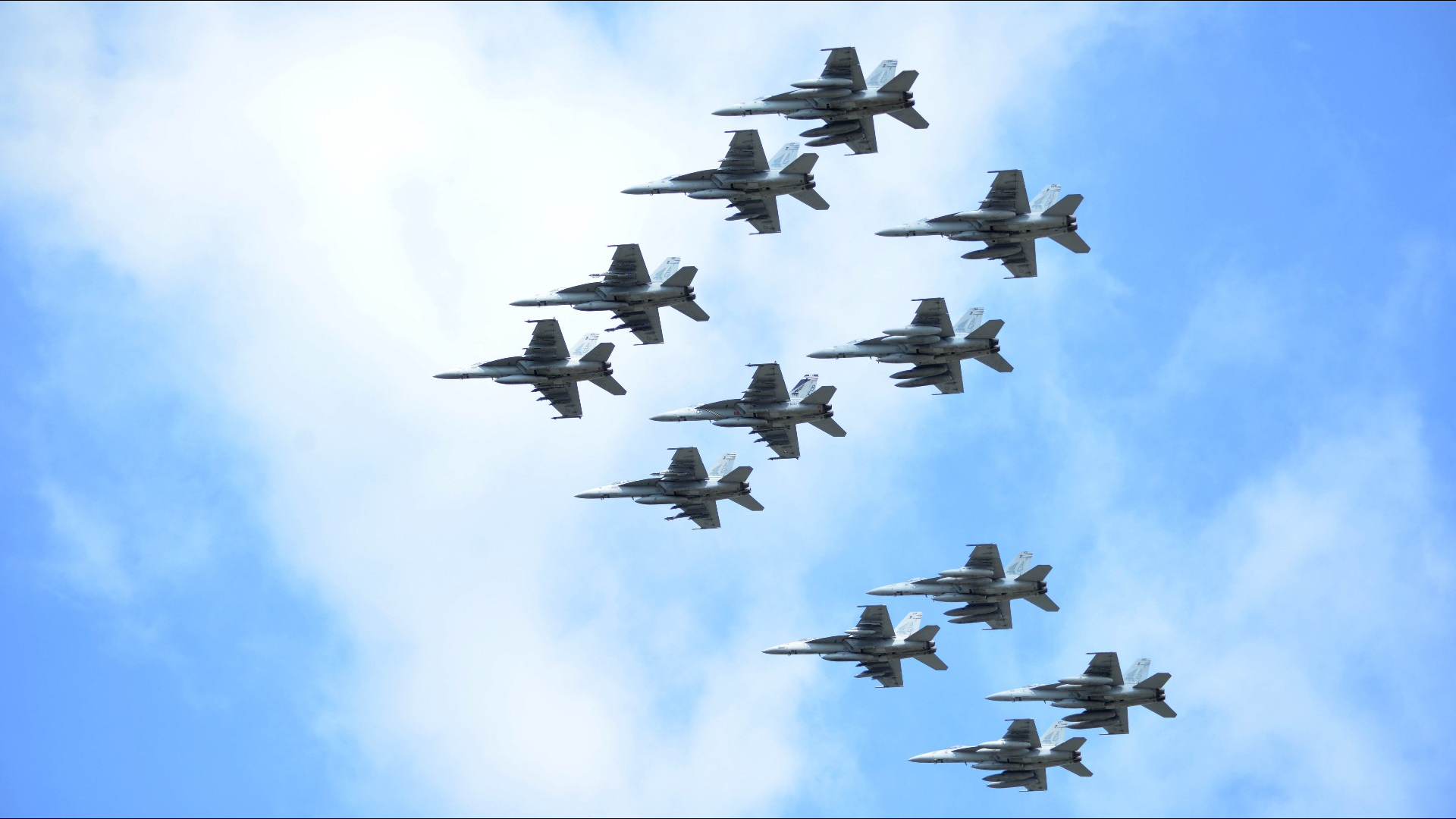
When Naval Air Station Oceana first opened in 1943, it had only been 40 years since the Wright Brothers invented modern manned flight.
There has been triumph, there has been tragedy, but through it all, there has been a commitment to excellence.
Milestone Worth Celebrating
Triumph and tragedy through seven-and-a-half decades at Oceana
It's like a scene straight out of Hollywood, with sleek planes, heroic pilots, and anxious loved ones awaiting their aviators' return.
Except it's not some movie. It's real, and it happens at Oceana all the time for the past 75 years. The time-honored homecoming after a long deployment plays out on the flight line of the master jet base several times every year.
PHOTOS: NAS Oceana reunions
"Since their inception in the 1940's, Oceana, Fentress and Dam Neck really have been supporting armed forces that have fought in every armed conflict from World War II to today's missions in Iraq, Syria, and Afghanistan," said Captain Chad Vincelette, who became the base's 45th commanding officer back in March.
Asked if it felt like a dream come true to take command, Vincelette said yes.
"I feel like I won the lottery. Being a local kid, grew up here, my Dad flew out of here," he said. "I've flown my whole career out of here, so, it really is a dream come true for me to be commanding officer of Oceana."
He added base's 75th anniversary is an occasion well worth celebrating.
"The 75th anniversary really is a celebration of the men and women who have served at Oceana -- both military and civilian -- because we have a lot of civilians that work here as well," said Oceana commanding officer Captain Chad Vincelette. "And it's also really a celebration of the relationship between the Navy and the cities of Chesapeake and Virginia Beach."
Of course, there have been times of difficulty and heartache, including earlier this year when Oceana lost two officers in an aviation mishap, and six years ago, when a jet crashed into a nearby apartment complex. Miraculously, no one was hurt in that accident.
In every such instance, the base community came together, rallied, and carried on. That's what professional war-fighters do.
"It's what we do," said Vincelette. "You realize those are our brothers-in-arms, that when you lose them it's like losing a piece of your own family. But you have to go on, because there's a bigger piece to the mission you need to do. And then you realize that they would want you to carry on and continue the mission."


Rear Admiral Roy Kelley is Commander of Naval Air Force Atlantic. AIRLANT's mission is to ensure fleet assets are prepared to deploy in response to any national security requirements or in support of Humanitarian Assistance and Disaster Response.
Kelley, who spent many of his younger years flying out of Oceana himself, knows exactly how important the facility is, as well as the people who populate it.
"The location being right there, close to the Atlantic Ocean allows us to get in operating ranges right there off the coast. Very convenient," he said.
The People in the Cockpits
Former pilots say what makes Oceana great isn't the planes, it's the people
Thousands of pilots and naval flight officers have passed through Oceana over the last the seven-and-a-half decades.
"If you look at the giants of naval aviation, a lot of them have been stationed or operated out of Oceana," said Kelley. "And it's kind of fun to think of all the different leaders across the years, some very well known in this area and throughout the world... there's been a ton of naval aviators that have come through Oceana, done their tours, some of them several times and then gone on to greatness throughout the Navy."

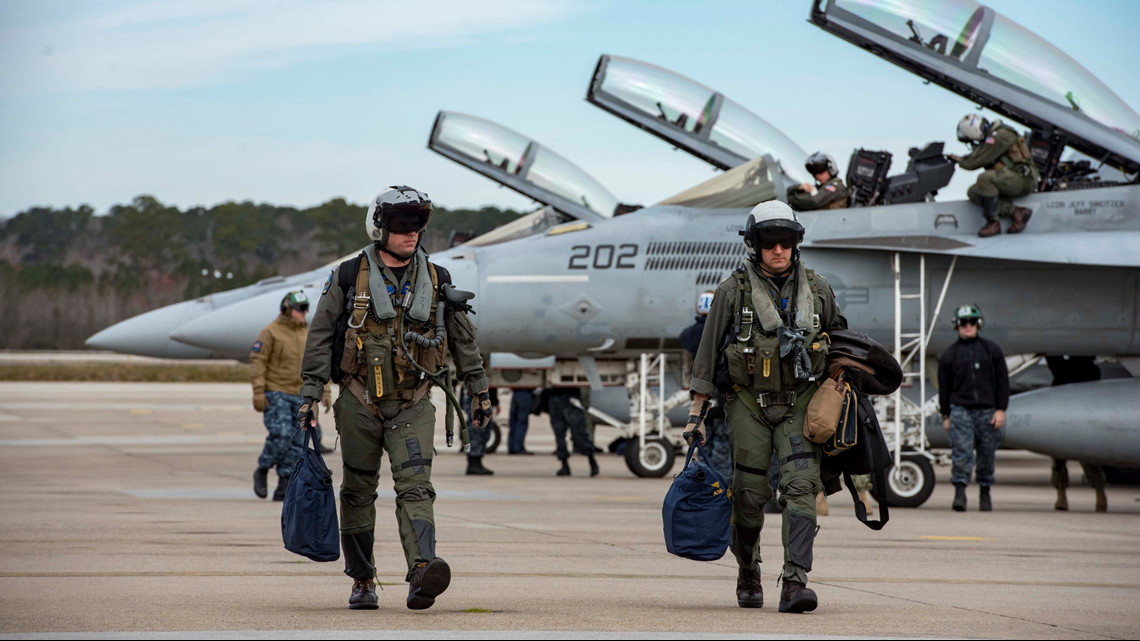
Retired Rear Admiral Frederick Lewis of Virginia Beach is one of them. He recorded more than 6,500 flight hours in more than two dozen fixed wing and rotary aircraft and made more than 1,200 arrested landings on aircraft carriers in a career that spanned from 1958 to 1995.
It's possible that "Bad Fred" as he was called, has more flight time at Oceana than anybody living today. He says there is no place better.
"Oceana is terribly significant in terms of naval aviation; where we've been, where we're headed. It is a critical operational facility that we absolutely need to have here," he said. "It has been absolutely vital to prepare pilots to go to carriers."
Retired Admiral Bill Gortney flew over 5,300 mishap-free flight hours and completed 1,265 tailhook landings, primarily in the A-7E Corsair II and the FA-18 Hornet. He served as commander, U.S. Fleet Forces Command from 2012-2014, before retiring in 2016.
Gortney's job was to train, certify and provide combat-ready Navy forces to combatant commanders that are capable of conducting prompt, sustained naval, joint, and combined operations in support of U.S. national interests.
The Navy League board member knows all about how vital Oceana is.
"We're going to be flying off of aircraft carriers for as long as we have aircraft carriers," he said. "So, the future: I see another 75 years in its future. At the end of the day, especially in the East Coast, we couldn't build a Navy and Marine Corps station today. We kind of have what we have, given the environmental rules and potential for encroachment. So, being able to keep and work with the citizens and the communities around all of our air bases and air stations is absolutely critical. And no place does it better than the Commonwealth and here, the Tidewater area."
Humble Origins
From humble origins, Oceana grew to become one of world's most advanced jet bases
From humble origins to becoming one of the largest and most advanced air stations in the world, the story of Oceana is an amazing tale.
Author Amy Waters Yarsinkse captures it all in her book, Naval Air Station Oceana: From Mud Flats to Mission Ready.

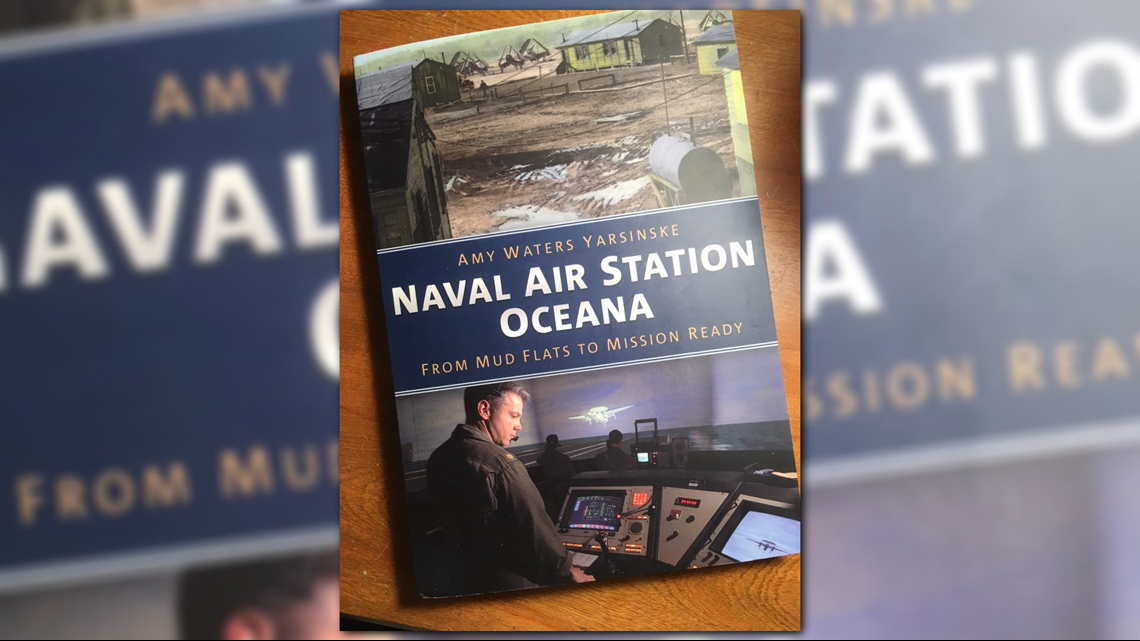
"They were visionaries," she said. "It actually started in the 30's. They were looking on maps, they were pinpointing areas to put such a field, because they already had the Norfolk air station. They had that as the focal point for fleet air at the time, and they were looking for the smaller fields, the outliers at that time to put the squadrons they knew would come in large numbers during the war if any war occurred. And war was already starting up in Europe. They knew it. They knew something was coming. So they started pinpointing on a map and they started to look at properties to acquire."
And they found it: between the village of Oceana and the Princess Anne County Courthouse lay 5,000 acres of farmland from which the air station eventually sprang. With low population density and plenty of elbow room, the parcel was the perfect location for a military airfield.
"They located the airfield in the middle of a farmer's field in Princess Anne Country because it looked like a great spot. There was nothing else out there and the land was very inexpensive to acquire. Even if they had to pay fair market value, it was still inexpensive," said Yarsinske. "Because by the end of the 30's, many of these farms had started to fail in terms of productivity. So they knew they could get it for a good price, and they did."
Naval Air Station Oceana Historical Photos
Currently, Oceana is home to 15 Fleet Strike-Fighter Squadrons of F/A-18 Hornets and Super Hornets, one Fleet Replacement Squadron of F/A-18 Hornets and Super Hornets, one reserve Aggressor Squadron of F/A-18 Hornets, and one reserve Fleet Logistics Squadron of C-40 Clippers for a total of approximately 330 aircraft.
The facility has grown to comprise 6,820 acres including Dam Neck Annex, with four runways. Three of the runways measure 8,000 feet in length, and the fourth measures 12,000 feet.
The planes fly approximately 219,000 training operations there every year.
During the 2005 round of Base Re-alignment and Closures (BRAC), Oceana almost went away. Because of excessive residential and commercial encroachment near the base, the BRAC commission proposed moving Oceana's fighters to Cecil Field, Florida.
The Commonwealth of Virginia and the City of Virginia Beach partnered to save the base, spending $10 million a year to buy back and help relocate non-conforming businesses in crash zones surrounding the base.
"We didn't think we could lose Oceana, that was the assumption," said Yarsinkse. "We thought, 'No, that couldn't go away.' But it could've. And it almost did."
But, it wasn't to be. Oceana stayed. Now, 13 years later, the base is celebrating its 75th anniversary.
"It's born of a time when we needed them, and we still need them now," said Yarsinkse. "Celebrating that is something that's pretty special. Seventy-five years is a long time and they've done nothing but grow and become better and better as the years have gone on. It's an anniversary that's worth every moment of recognition it gets."
You Can't Do It Alone
Former commanding officers praise Oceana, people who work there
Former commanding officers, retired Captains Bob Geiss, Kit Chope, and Lou Schager, say Oceana is a special place.
"It's about the intangibles," said Geis. "It's a Navy installation like other Navy installations. It's got a runway like other bases. But what it has is history. What it has is a brotherhood and sisterhood. What it has is this history of legends that have lived and flown and worked out of this installation."
Chope enjoyed his time there. "It was a special time and actually the formative years for all of us. We went through flight school and the fleet replacement squadron and into the fleet as young lads and lasses," he said. "I think now you can look back and see what you learned from those legends. And it has been awesome to look back as I retired a few years ago and what that meant to me."
For Schager, arriving at Oceana was like coming home.
"I think immediately when you walk through the door, you want to be a part of it, and I think you want to contribute in some way," he said.

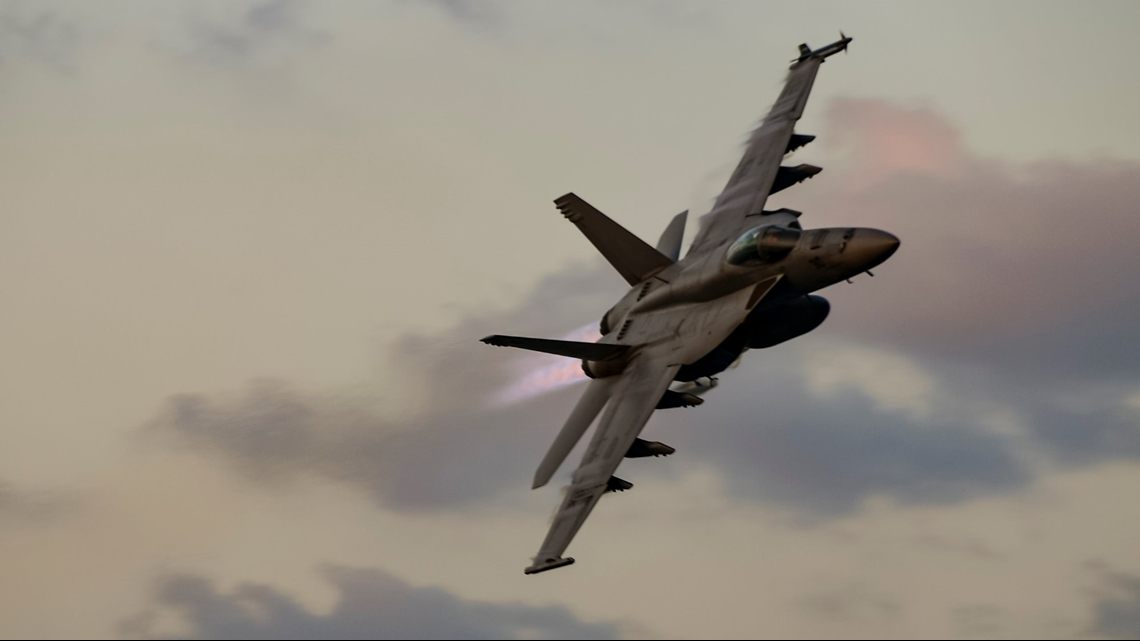
Leading the base comes with its own set of challenges. In the late 1990's and early 2000's, a group called CCJAN -- Citizens Concerned About Jet Noise -- made its voice heard. A few years later, as the Navy searched for a new outlying field, residents of Northeastern North Carolina and Southside Virginia made clear they didn't want the OLF in their backyard.
Two years ago, the Navy discovered that private wells near Fentress Field had been contaminated with chemicals from firefighting foam in the 1980's.
And then just last year, base leaders had to deal with the aftermath of more than 90,000 gallons jet fuel spilling into nearby tributaries of the Chesapeake Bay.
In each case, Oceana leaders tackled the issues head-on, worked to solve the problems, and pressed forward. The three former C.O.'s agree: you can't do it alone. It's a true team effort.
"It's safe to say every day, people connected to Oceana are on the front lines of the nation's battles," said Schager. "And in addition to the sailors and marines and military members that are overseas, you've got a family and a network of support systems here in Virginia Beach and Chesapeake and Hampton Roads doing just as much to make sure that our mission is met. That cannot be overstated."
Chope agreed.
"It has a different sense of family than other installations in the Navy," he said. "And I can tell you anecdotally, there are folks on this installation that have foregone opportunities elsewhere to stay right here at Naval Air Station Oceana."
Geis concurred.
"And to be a part of that lineage in some small way, some part of that 75 years, with all the relationships in the city, the Navy League and those type of things, it's a part of that brotherhood or sisterhood that you can't replace and can't find anywhere else," he said.
Lighting Up the Skies
Oceana enjoys cool factor with air shows and state-of-the-art technology
There is a real "cool" factor to what takes place at Oceana. Although the primary mission is to prepare the war-fighters for combat overseas, what they also do is inspire.
Hundreds of thousands of people come out to Oceana every September for the thrills and chills at the annual air show. It's their chance to get an up-close look at their Navy at work. The Blue Angels are always the stars of the show.
Last year, the team's "boss" spoke about why they do what they do.
"We hope we can inspire people to go do something great with their life," said Capt Ryan Bernacchi. "Whether that's flying or serving in the military, great... but I think more important, go chase that dream."

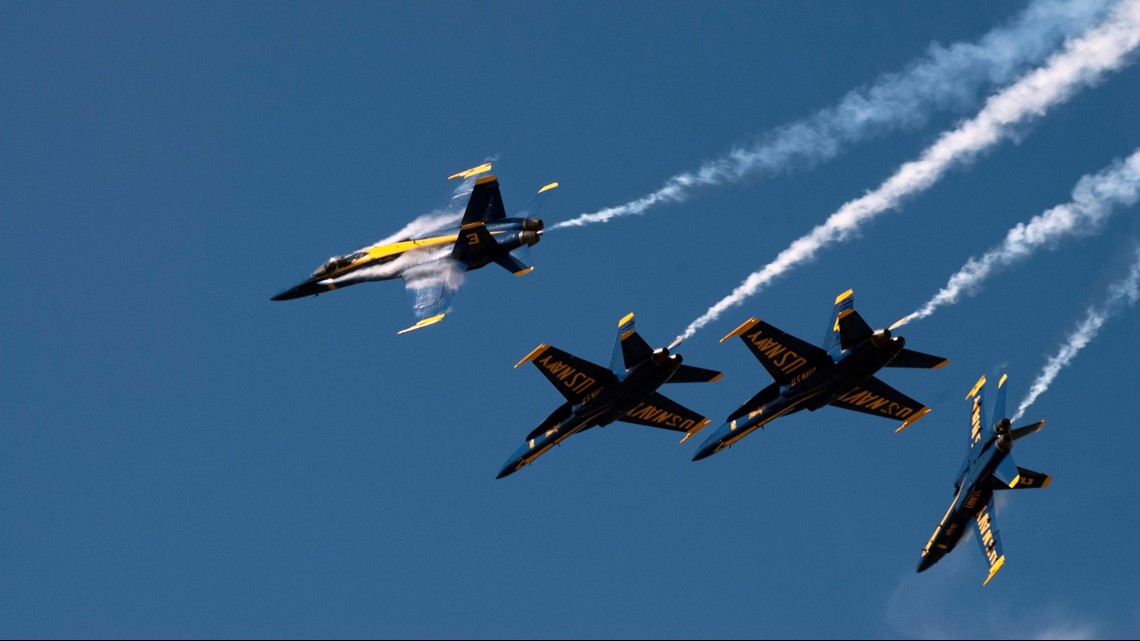
In 2016, two members of Oceana squadron VFA-106 got to chase the dream, getting selected to join the team.
"Everyone always dreams about it. I don't know if I actually thought it was going to be a reality for me but flying has always been something I wanted to do," said LT Nate Scott.
"My parents took me to my first Blue Angels show," said LT Juan Guerra. " I don't remember it, but they took pictures of me and I still have that picture of the signed autographs from the Blue Angels hanging in my room."
For the past two years, every fifth grader enrolled in Virginia Beach City Public Schools has gotten to come out to the show and meet jet pilots as part of an ongoing STEM education partnership.

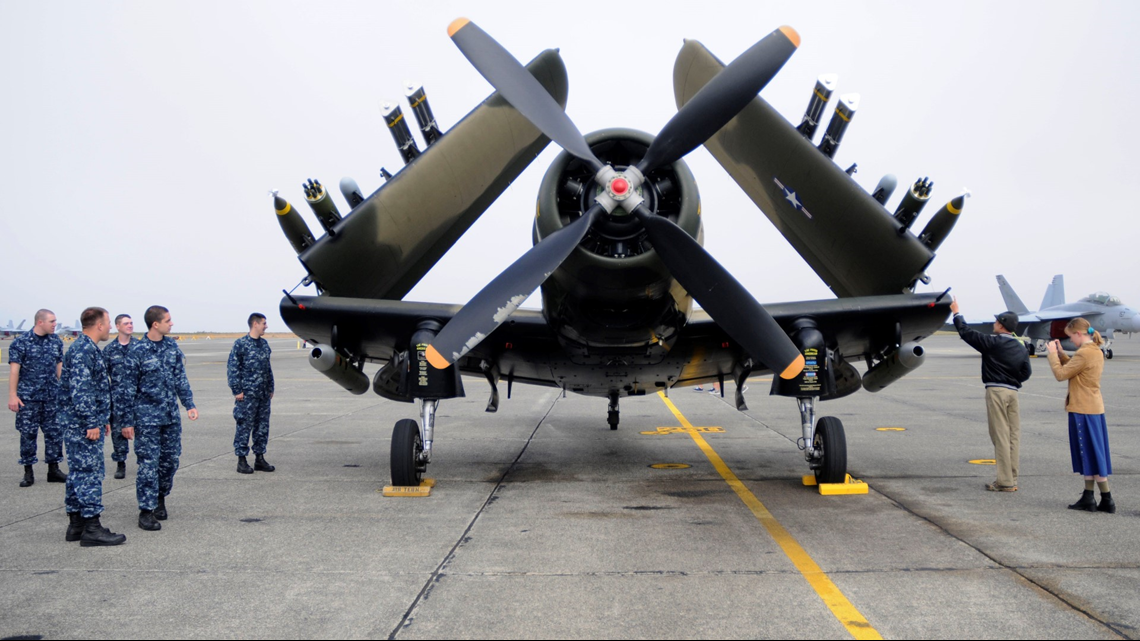
And while the air show is incredible, it is by no means the only cool thing at the base. Far from it.
One of the coolest things of all at Oceana is the world's only Landing Signals Officer school. It's where pilots learn how to safely land their colleagues on ships, helping them take their $52 million fighter jets from 150 miles an hour to zero in a matter of seconds safely.
The LSO school's long-time director is Commander Bryan "R.J." Roberts, a Super Hornet pilot. Roberts has been stationed at Oceana in one capacity or another for 20 of his 23 years in the Navy.
He said what LSO's do is crucial.
"Historically, landing on the back of the ship is one of the hardest things to do, which is why we spend so much time preparing for it every time we go to the ship," he said. "150 touch and go's before we ever do it on one of our platforms for the first time."
He said safety is job one.
"We're the last critical link for the safe and expeditious recovery of aircraft, which is our mantra," he said. "So we're the ones standing out on the back of the ship, guiding the pilots for their final phase of landing at about 800 feet per minute, vertical rate of descent moving forward at about 150 miles an hour. So that's why we're there. We're there to help our friends, make sure we get them aboard safely."
Oceana's Economic Impact
Oceana's economic impact to Hampton Roads: More than $1.3 billion annually
The base, including Dam Neck Annex, has about 10,500 active Navy personnel, about 10,000 family members, and 4,500 civilian personnel, making NAS Oceana the second largest employer in Virginia Beach with an overall annual financial impact on the region of $1.3 billion.
It's an important piece of the City of Virginia Beach's economic development game-plan.
"We have the best trained Navy and military force in the world," said Warren Harris, Virginia Beach Economic Development Director. "They have a large presence here in our community, in our region. And I think Oceana is here to stay, and we're certainly as a community going to continue to embrace them as an important part of our community."
After the 2005 BRAC scare, the cities of Virginia Beach and Chesapeake and the Commonwealth and the Navy got busy, doing everything possible to protect the base, including carefully coordinating business development activities around the base, to make sure they conform with the Navy's mission.
"We were going to lose that asset," said Harris. "And it was a stressful time here in the City of Virginia Beach. But we rallied, both with our federal and legislative support and the governor's office, and certainly locally, to create a unique arrangement, whereby we could work hand-in-glove with the Navy, and make sure that we as a city do everything we can to embrace their operations and not impinge upon their operations."
Michelle Chapleau, the city's Business Development Coordinator, said much has been invested in protecting the base.
"Since the program's inception, the Oceana Land Use conformity committee has approved about $2.9 million in incentive grants to leverage over $53 million in new capital investment in the city to 56 businesses," she said.

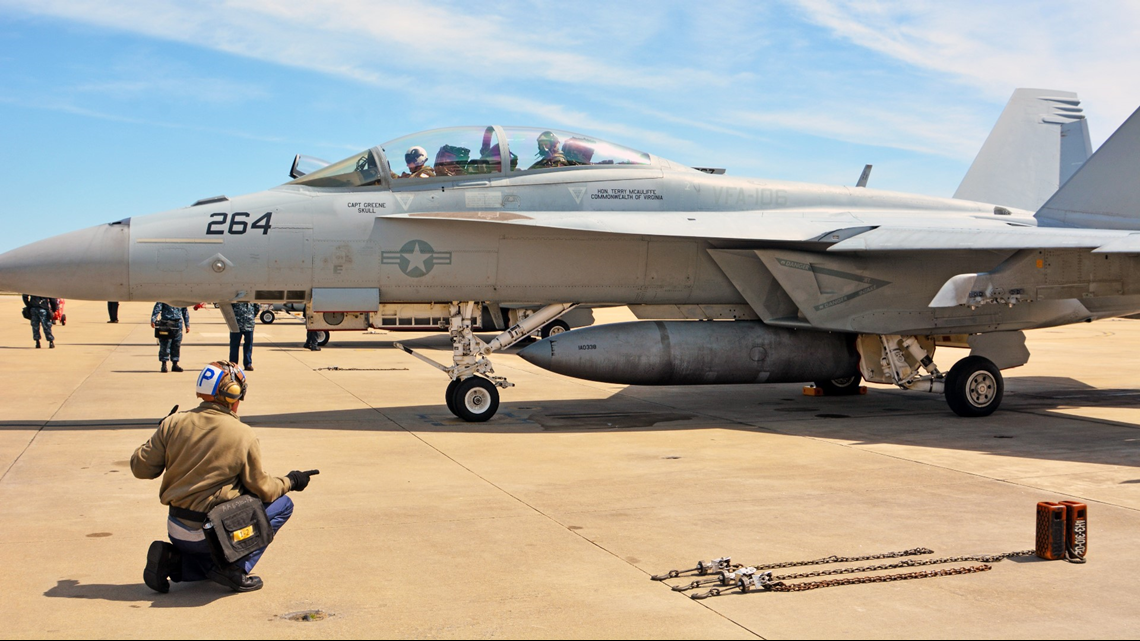
Virginia Governor Ralph Northam is a big fan of Oceana and an enthusiastic supporter of retaining the facility. While in the State Senate, he voted to approve state funds to help the municipalities reduce encroachment around Oceana and Fentress Field.
"Over a billion dollars comes into the Virginia economy because of Oceana's presence, so, we've always been proud to have Oceana there," he said. "I was in the Senate and was part of that encroachment process. And it was a bipartisan effort and everybody knew it was the right thing to do. And so, we did it."


So, after 75 glorious years, the question is: what does the future hold for Oceana? Plenty.
"Naval Air Station Oceana is truly a jewel. It's a national treasure, and I don't say that lightly," said retired Rear Admiral Craig Quigley, who heads up the Hampton Roads Military and Federal Facilities Alliance. That group's job is to monitor federal budgets and congressional actions in Washington and to be on high alert for any threats to this region's bases.
Quigley is upbeat about Oceana's future.
"I do feel very good about the future of Oceana," he said. "Oceana has such a fabulous history. But it's got a bright future, too. Many, many things have been done to enhance the effectiveness of the aircraft that are stationed there, and we will continue to do that in the years ahead."
Watch Oceana: 75 Years of Excellence hosted by 13News Now military reporter Mike Gooding on the following dates:
- Saturday, August 11 at 1 p.m.
- Tuesday, August 14 at 3:30 p.m.
- Friday, August 17 at 10:30 p.m.
- Saturday, August 18 at 1 p.m.
- Friday, August 24 at 10:30 p.m.


